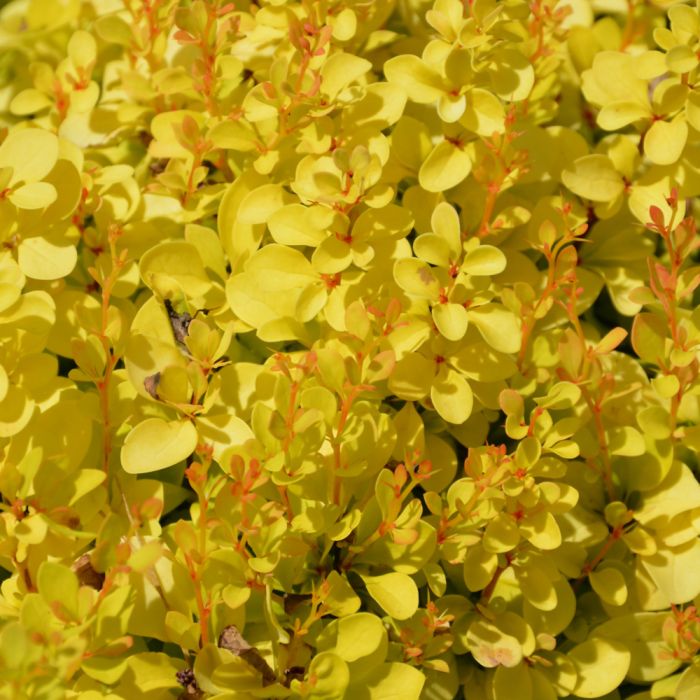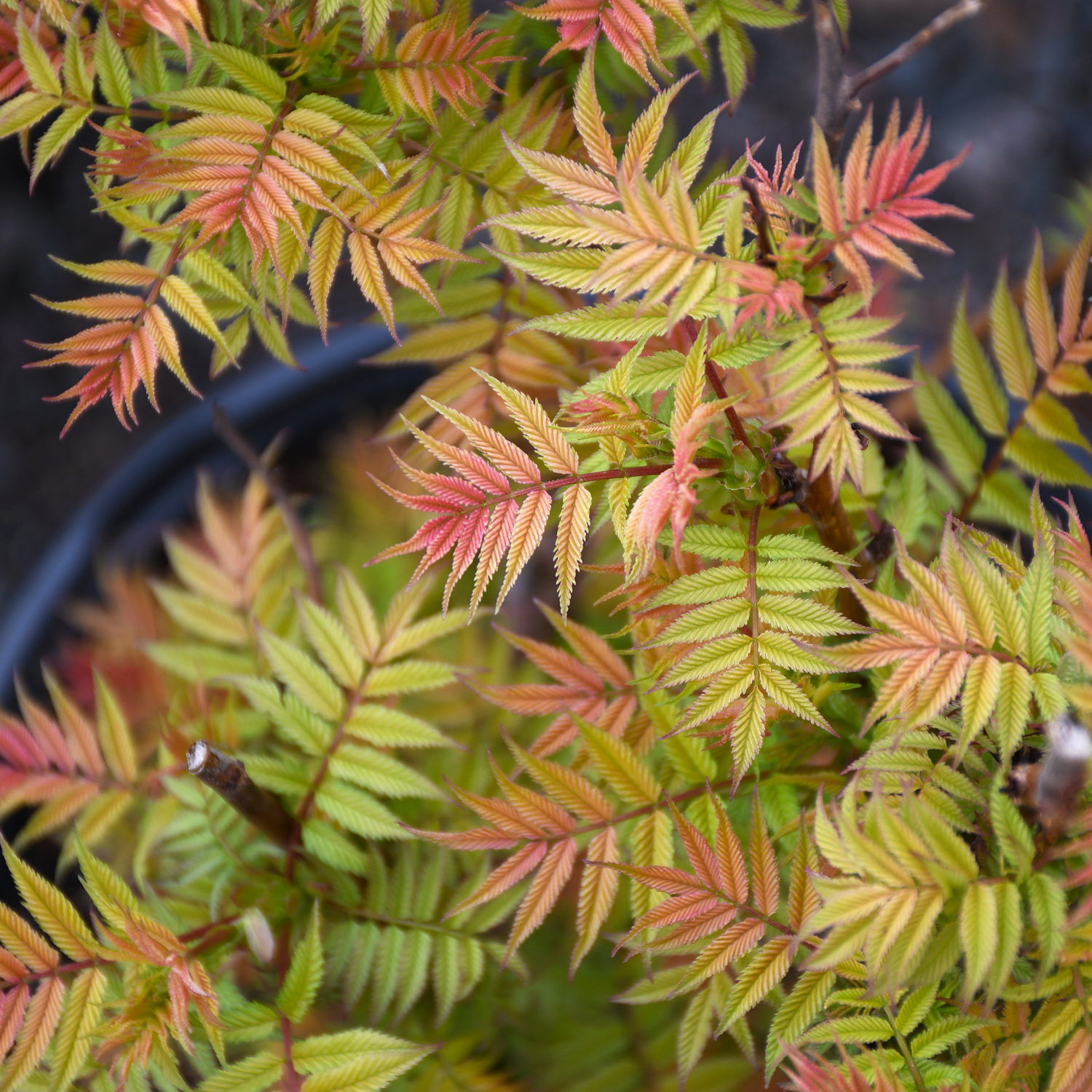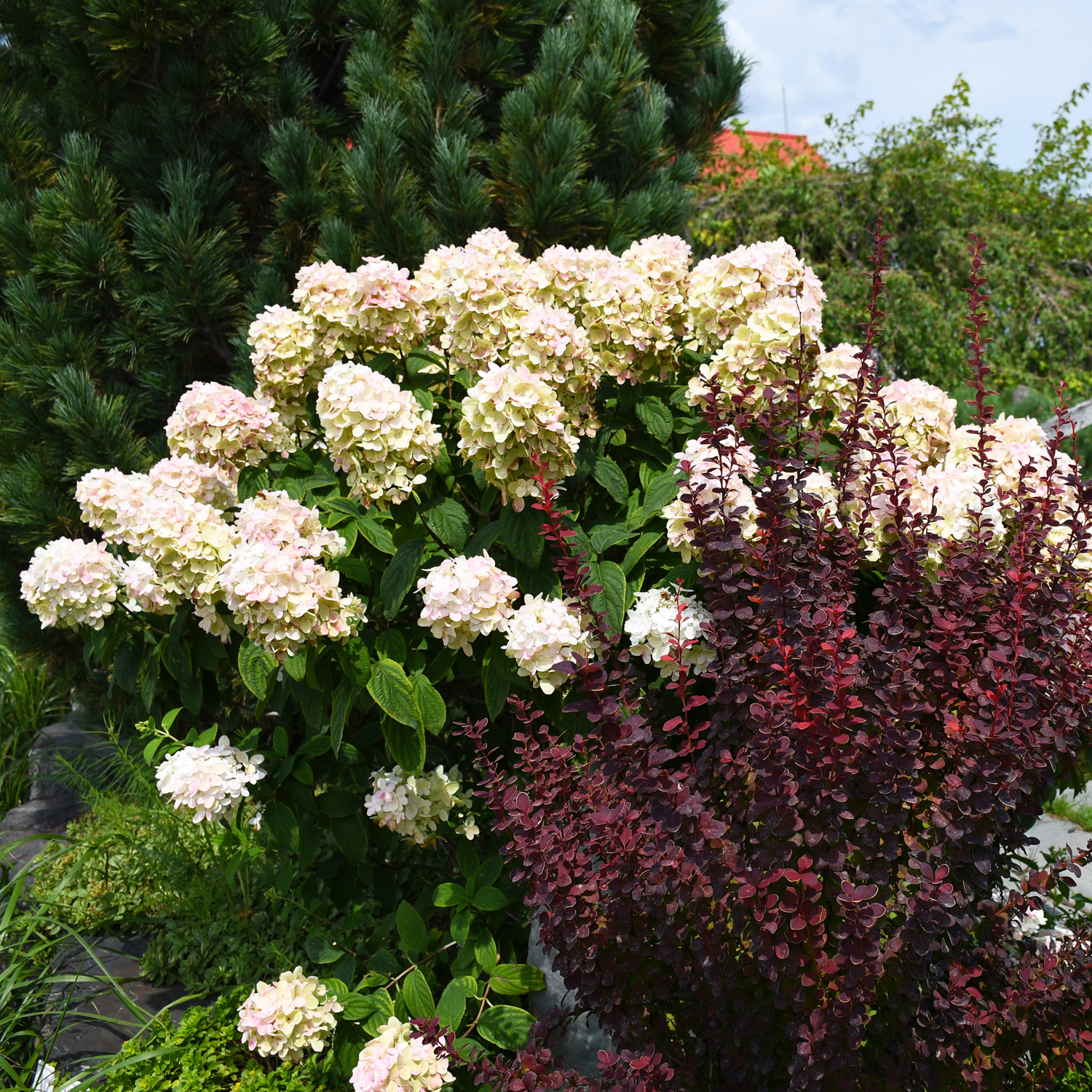Berberis, Japanese Barberry 'Sunjoy® Mini Saffron'

Out of stock
- Sun Preference
- Full-Sun
Description
This compact dwarf is a well-shaped mound of bright yellow foliage that turns orange-red in fall; grown primarily for foliage; very showy, great as a color contrast in the landscape; plant on slopes, in beds, or as a border.
Minnesota's Largest Selection of Shrubs
Elevate your landscaping with Gertens' unmatched variety of shrubs! Selecting the right shrubs for your backyard can enhance its beauty and functionality. Consider factors like sunlight, soil type, and mature size when choosing shrubs. For sunny areas, flowering shrubs like roses or hydrangeas can add color and charm. In shady spots, opt for shrubs like azaleas or hostas. Evergreen shrubs provide year-round interest and privacy, while deciduous shrubs offer seasonal color changes. At Gertens, we offer a wide selection of shrubs to suit every backyard need.
Details
Height: 24 inches
Spread: 30 inches
Sunlight:![]()
![]()
Hardiness Zone: 4a
Brand: Proven Winners
Description:
This compact dwarf is a well-shaped mound of bright yellow foliage that turns orange-red in fall; grown primarily for foliage; very showy, great as a color contrast in the landscape; plant on slopes, in beds, or as a border
Ornamental Features
Sunjoy Mini Saffron Japanese Barberry has attractive gold foliage edged in orange which emerges yellow in spring. The small oval leaves are highly ornamental and turn outstanding shades of orange and red in the fall. Neither the flowers nor the fruit are ornamentally significant.
Landscape Attributes
Sunjoy Mini Saffron Japanese Barberry is a dense multi-stemmed deciduous shrub with a more or less rounded form. Its relatively fine texture sets it apart from other landscape plants with less refined foliage.
This shrub will require occasional maintenance and upkeep, and should not require much pruning, except when necessary, such as to remove dieback. Deer don't particularly care for this plant and will usually leave it alone in favor of tastier treats. Gardeners should be aware of the following characteristic(s) that may warrant special consideration;
- Spiny
Sunjoy Mini Saffron Japanese Barberry is recommended for the following landscape applications;
- Mass Planting
- Border Edging
- General Garden Use
- Groundcover
Planting & Growing
Sunjoy Mini Saffron Japanese Barberry will grow to be about 24 inches tall at maturity, with a spread of 30 inches. It tends to fill out right to the ground and therefore doesn't necessarily require facer plants in front. It grows at a slow rate, and under ideal conditions can be expected to live for approximately 20 years.
This shrub does best in full sun to partial shade. It is very adaptable to both dry and moist growing conditions, but will not tolerate any standing water. It is not particular as to soil type or pH, and is able to handle environmental salt. It is highly tolerant of urban pollution and will even thrive in inner city environments. This is a selected variety of a species not originally from North America.
| SKU | Container Size |
| S0524 | #2 Container (2 Gallon) |
* Not all container sizes may be available at this time. See store for details on specific container size availability.
More Information
| Available for Pre-Order | No |
|---|---|
| Sun Preference | Full-Sun |
| USDA Hardiness Zone | 4, 5, 6, 7, 8 |
| Common Family Name | Barberry |


